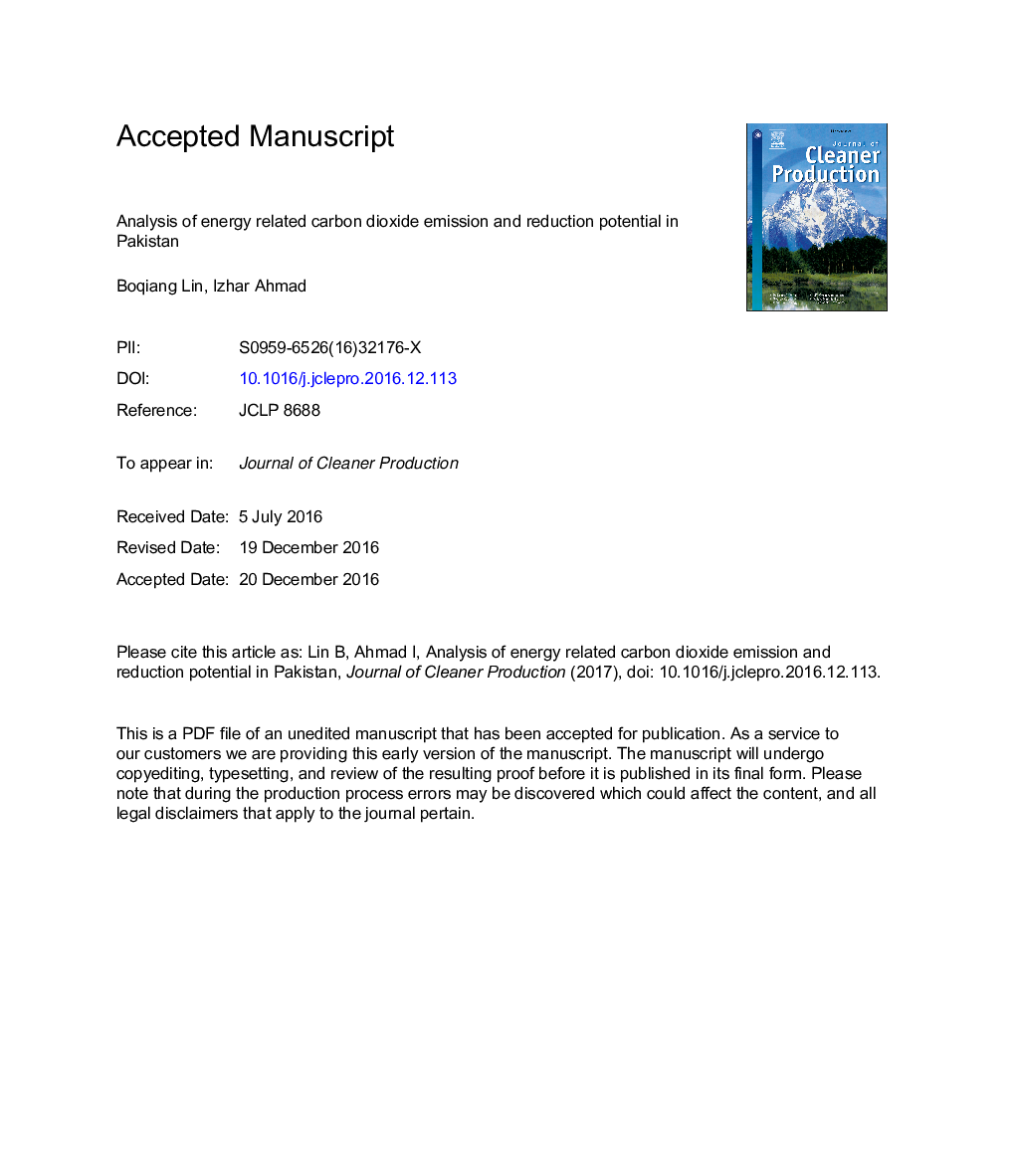| کد مقاله | کد نشریه | سال انتشار | مقاله انگلیسی | نسخه تمام متن |
|---|---|---|---|---|
| 5481080 | 1522110 | 2017 | 34 صفحه PDF | دانلود رایگان |
عنوان انگلیسی مقاله ISI
Analysis of energy related carbon dioxide emission and reduction potential in Pakistan
ترجمه فارسی عنوان
تجزیه و تحلیل انتشار گازهای دی اکسید کربن و کاهش پتانسیل در پاکستان
دانلود مقاله + سفارش ترجمه
دانلود مقاله ISI انگلیسی
رایگان برای ایرانیان
موضوعات مرتبط
مهندسی و علوم پایه
مهندسی انرژی
انرژی های تجدید پذیر، توسعه پایدار و محیط زیست
چکیده انگلیسی
Climate change is one of the most dangerous and complex issues human being has ever encountered. Pakistan is one of the highly vulnerable countries to the effects of climate change. CO2 emission from the combustions of fossil fuels is usually considered as the major factor of climate change. This study attempted to analyze the energy related CO2 emissions in Pakistan for a sample period of 1990-2014. The LMDI (Logarithmic Mean Divisia Index) method is applied to extended Kaya identity to decompose the change in emissions into pre-determined factors. According to our analysis, the increase in GDP per capita and populations are the major factors responsible for the increase in energy related CO2 emissions. Carbon intensity contributes to the reduction of emissions. Energy intensity and fuel substitution has mixed and unstable effect on the reduction of emission. The decomposed effects are also used in predicting future CO2 emission for the period 2015-2025. Based on the predicted results, the reduction potential of CO2 emissions in Pakistan is estimated, using special designed scenario analysis. The findings show that emissions will reach 251.5Â Mt CO2 in 2025 as per BAU (Business as usual) scenario. The reduction potential for the year 2025 is estimated as 28.94Â Mt CO2 and 55.02Â Mt CO2 as per moderate and aggressive emission reduction scenario, respectively. The findings show that carbon tax, energy price reforms, diversification of energy supply in favor of cleaner energy and energy conservation are critical to materialize the emission reduction potential.
ناشر
Database: Elsevier - ScienceDirect (ساینس دایرکت)
Journal: Journal of Cleaner Production - Volume 143, 1 February 2017, Pages 278-287
Journal: Journal of Cleaner Production - Volume 143, 1 February 2017, Pages 278-287
نویسندگان
Boqiang Lin, Izhar Ahmad,
